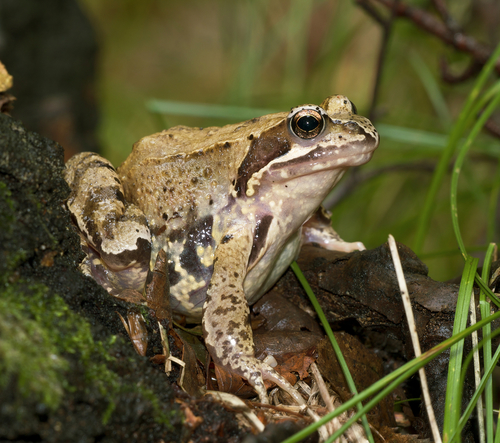
Common Frog
Rana temporaria, known for its exceptional jumping and variable skin color, thrives in damp European habitats. This adaptive amphibian plays a vital role in controlling insect populations and supports a balanced ecosystem through its widespread presence.
7-9 years
Lifespan
20.0 - 80.0 g
Weight
Length: 6 - 10 cm
Size
Brown, Grey, Black, Green
Color
5 mph
Top Speed
Least Concern
Conservation Status
Stable
Population Trend
Distribution Range of the Common Frog
Rana temporaria, commonly known as the common frog, is native to Europe. Its geographical distribution extends from Ireland and the United Kingdom in the west to the Ural Mountains in Russia in the east. It is also found in parts of western Asia, including Turkey. The species is absent from southern Europe, including Spain and much of Italy, as well as from the southern islands of the Mediterranean.
Common Frog's Habitat
Environmental Conditions
The common frog typically inhabits temperate regions characterized by mild to cool climates. It is commonly found in a variety of wetland environments, such as ponds, marshes, ditches, and gardens. The species is adapted to both lowland and upland areas, being able to survive in diverse environments ranging from sea level to alpine regions.
Ecological Niche
Rana temporaria occupies a generalist ecological niche, thriving in a wide array of habitats. It mainly feeds on invertebrates, including insects and their larvae, spiders, and snails. The species is fossorial over winter, hibernating in mud or under vegetation. During breeding season, common frogs migrate to watery habitats, where they lay eggs in clusters. Their adaptability to different habitats makes them a resilient species, although they are sensitive to habitat destruction and pollution.
Copyright @ Nature Style Limited. All Rights Reserved.
 English
English